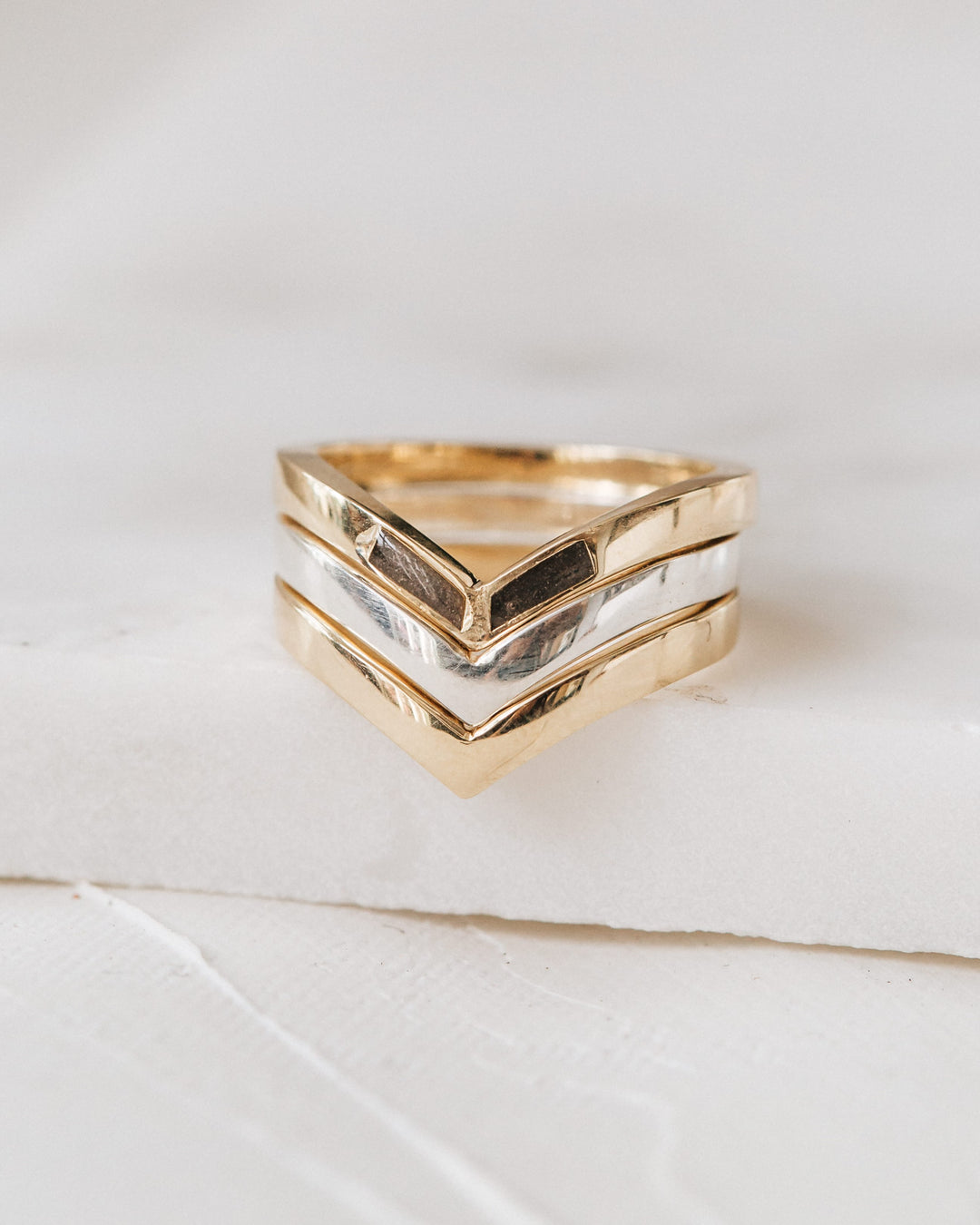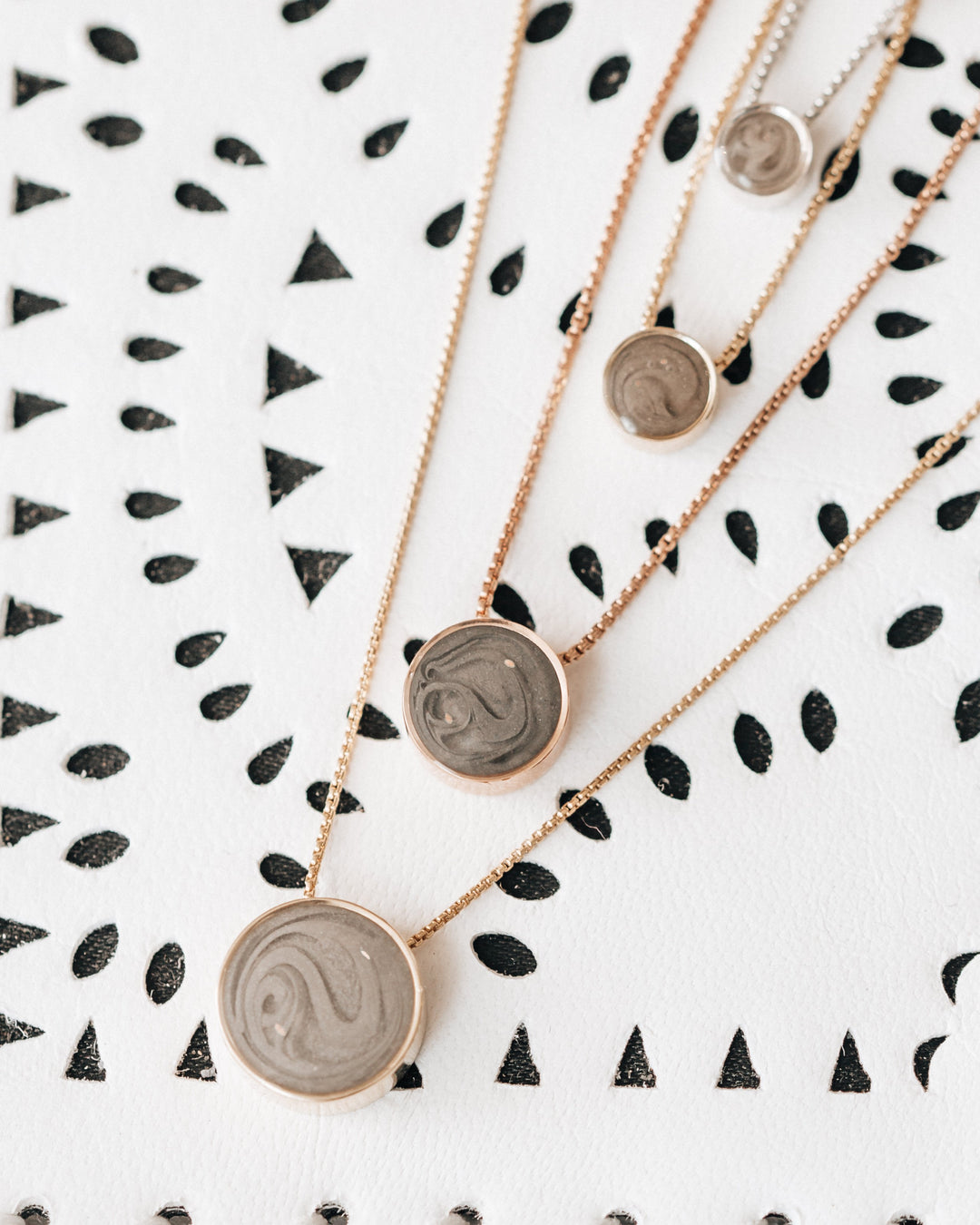Why Is My Jewelry Turning Black?
When you order a piece of cremation jewelry from us, it is our intention that your piece will serve as a beautiful remembrance of your loved one that will last a lifetime. The preciousness of a piece that holds the ashes of a loved one cannot be overstated, so we understand how deeply upsetting it can be to discover that your cremation jewelry has suddenly begun to darken and discolor. You may rest assured, however, that what you are seeing is a very natural and innocuous reaction that can not only be explained, but also removed and prevented. We hope the following article will be enlightening and informative, but if you have any questions or concerns that are not covered here, please do not hesitate to contact us.
If your jewelry is experiencing the symptoms mentioned above, our guess is that your piece is made from sterling silver. We say this because sterling silver can develop a dark discoloration over time called tarnish. Tarnishing is when the metals that compose sterling silver react with substances that contain sulfur. Sterling silver is formed by alloying, or combining, pure silver with other metals; these “other metals” are typically predominantly or entirely copper and make up 7.5% of the final product. The tarnish on sterling silver consists of silver sulfide, a compound produced by pure silver reacting with sulfur, and copper sulfide, a compound produced by copper reacting with sulfur. The copper content in sterling silver is what makes it tarnish much faster and more readily than pure silver. 14K gold does have the ability to tarnish; this happens not because of the pure gold content, which is not susceptible to tarnishing, but rather the additional metals alloyed with the pure gold. (To read more about the metal makeup of 14k gold, see our post on Choosing the Right Metal for Your Memorial Jewelry.) That being said, the tarnishing of 14k gold versus that of sterling silver are drastically different; 14k gold tarnishes much more slowly and rarely, and the effect is much subtler and often goes unnoticed. If needed, though, tarnish can be removed from 14k gold using the same methods listed below.
REMOVING TARNISH
A distinguishing feature of tarnish is that it is self-limiting. By this we mean the tarnish will only affect the very outer layers of the metal. So even though tarnishing is considered a form of corrosion, the tarnish actually serves as a protective barrier for the rest of the metal and is able to be cleaned or polished off to restore your piece’s original shine. We provide a small polishing pad with all completed orders that is effective at removing tarnish, but you can source your own polishing pad very easily as well; they are sold ubiquitously online as well as in jewelry stores and department stores, and are relatively inexpensive. Whether you are using the polishing pad we provided or one of your own, be sure to avoid rubbing the setting of your piece (the portion containing your loved one’s ashes), as this can cause the setting to lose its shine and take on a warped appearance. If this happens, there is no way for you to reverse or fix it yourself at home, and you would need to send your piece back to us for restoration.
PREVENTING TARNISH
Sulfur or sulfur compounds are present in many soaps and cleansers, moisturizers, shampoos, and perfumes, so we recommend removing your jewelry before using these products. (Please note that contact with these products can have an adverse effect on the setting of your piece as well. Please see our post on Care and Cleaning for Resin Jewelry for more information.)
Chlorine can also negatively react with the silver and copper in .925 sterling silver jewelry, leading not only to tarnish but also deeper corrosion, so we strongly recommend removing your jewelry before swimming in a chlorinated pool.
Your sterling silver jewelry may be more prone to tarnishing if you live in an urban or industrial area, or an area with high humidity. Because of this, we recommend being mindful of where you wear your jewelry and avoiding exposing it to these elements for an extended period of time, or at least making sure to routinely clean it (see next paragraph) and go over the metal with a polishing pad whenever any tarnish begins to appear.
Even sulfur-rich foods, such as eggs or onions, can affect your sterling silver jewelry, either by direct contact with the food or the sulfur later being excreted through perspiration, so it may be best to remove your jewelry before preparing meals with sulfur-rich ingredients (a good list of what these are can be found here).
To prevent any buildup of potential tarnish-causing residue, we recommend regularly cleaning your jewelry with a solution of warm water and a small amount of mild soap, which is any soap that is safe for repeated contact with skin and is free from harsh chemicals or detergents (e.g., phosphates, ammonia, bleach); an example of a suitable soap would be liquid dishwashing soap, but always remember to check the ingredients and use your best judgment. Use a soft cloth to gently clean your jewelry with this solution and then make sure to rinse it thoroughly and dry it completely. (Another benefit of this cleaning method is that it will not harm the setting of your piece!) Since sulfur causes tarnish and moisture accelerates tarnish, ensuring your jewelry is clean and dry as much as possible will be the best way to prevent tarnish.
When you are not wearing your jewelry, make sure it is stored in a dry, airtight container; avoid storing it in or near paper products, such as tissue paper, newspaper, or in a cardboard box, as these release sulfur. In addition to the polishing pad, we also provide a resealable anti-tarnish bag that can be used to store your jewelry.
SUMMARY
- Tarnish is the result of a chemical reaction between the metal and sulfur compounds. It only affects the outer layer of the metal and can be removed with products designed for this purpose.
- We provide a small polishing pad with every completed order that is great for removing tarnish, but you can purchase your own polishing pad or cloth online or in certain stores. Just be sure to avoid touching the ashes setting with these items!
- Sulfur or sulfur compounds are present in many soaps and cleansers, moisturizers, shampoos, and perfumes, so we recommend removing your jewelry before using these products.
- Take off your jewelry before swimming in a chlorinated pool, as chlorine can cause tarnish as well as deeper corrosion.
- Urban and industrial areas, as well as areas with high humidity, can contribute to tarnishing, as can consuming or cooking sulfur-rich foods.
- Ensuring your jewelry is clean and dry as much as possible will be the best way to prevent tarnish. Regularly clean your jewelry with warm water and a mild soap, such as a liquid dishwashing soap, and make sure to thoroughly rinse it and completely dry it afterwards to prevent any tarnish-causing buildup.
- When you are not wearing your jewelry, make sure it is stored in a dry, airtight container; avoid storing it in or near paper products, such as tissue paper, newspaper, or in a cardboard box, as these release sulfur.




